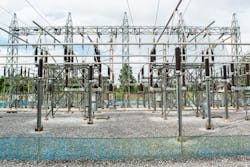Digital Substations: One Step Closer with Nonconventional Instrument Transformers
There are a host of reasons to choose digital substation designs when building a new sub or upgrading an existing substation. Material and installation costs are reduced, the footprint is smaller, reliability and flexibility are increased and safety is improved. This is all true, but it relates mostly to the secondary system. The sticklers remind us that the primary system, including breakers, surge arresters and transformers, cannot to date be made digital. Well, OK, we’ll begrudgingly admit that’s true, but instrument transformers have clearly come over to the “d” side and they offer a number of benefits.
For example, consider fiber optic current transformers. They are free of magnetic saturation that reduces the risk of conventional instrument transformers and they can be designed with a measurement bandwidth that ranges from tens or hundreds of kHz to multiples of kilohertz. These characteristics allow fiber-optic current transformers to provide a more accurate image of the primary current within their measurement range and they can also detect fast-transient currents and short-circuit currents. In addition, optical CTs are small and lightweight, so they can be integrated into other power products or operated as freestanding devices. Fiber optic current transformers have the safety benefits of other digital equipment and eliminate one more potential risk of an oil spill.
Fiber-optic current sensors have been around for decades, but due to the extensive use of fiber optics in communications, the technology has been greatly improved and the costs reduced. Based on the Faraday effect, fiber optic current sensors use light to deduce the precise magnitude of current that is creating a magnetic field. In addition to electric power industry measurement applications, fiber-optic current sensors are used for measurement in high dc industrial applications. Recently, they have also been use for detecting geomagnetic disturbances.
To learn more about how light sources, fiber optics, modulators and photodetectors provide highly accurate measurements of current, check out this article written by three authors, all affiliated with ABB, one of the leading providers of nonconventional instrument transformers: http://search.abb.com/library/Download.aspx?DocumentID=9AKK107046A7588&LanguageCode=en&DocumentPartId=&Action=Launch.
About the Author
David Shadle
Grid Optimization Editor
Dave joined the T&D World team as the editor of the Grid Optimization Center of Excellence website in January 2016.
Dave is a power industry veteran with a history of leading environmental and development organizations, championing crucial projects, managing major acquisitions and implementing change. Dave is currently a principal at Power Advance, LLC, an independent consulting firm specializing in power project development, research and analysis, due diligence and valuation support. Dave is also a contributing consultant for Transmission & Distribution World. Prior to Power Advance, Dave held business and power project development positions with The Louis Berger Group, Iberdrola Renewables, FPL Energy and General Public Utilities. He is a graduate of Pennsylvania State University, the New Jersey Institute of Technology and Purdue University.
